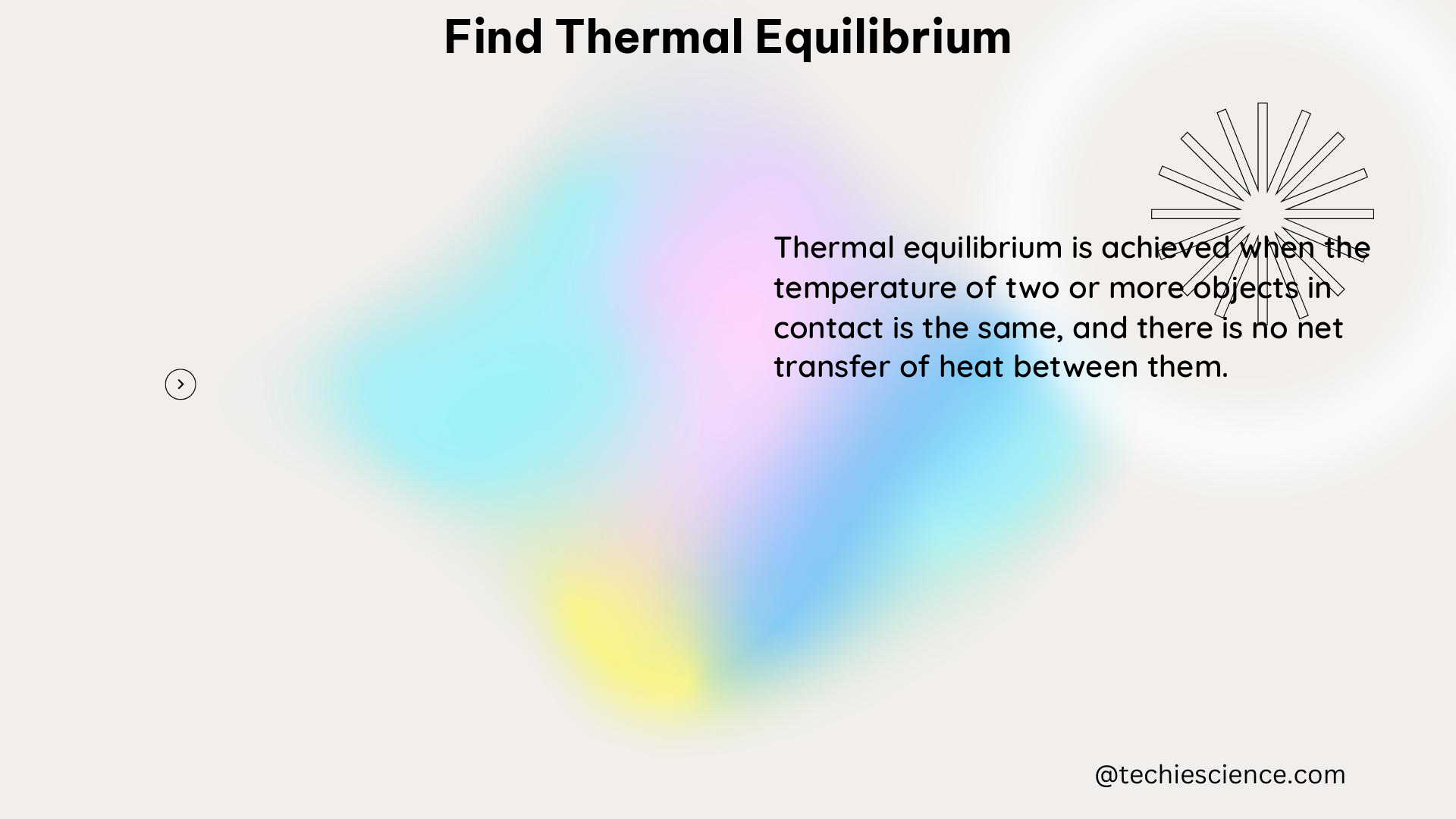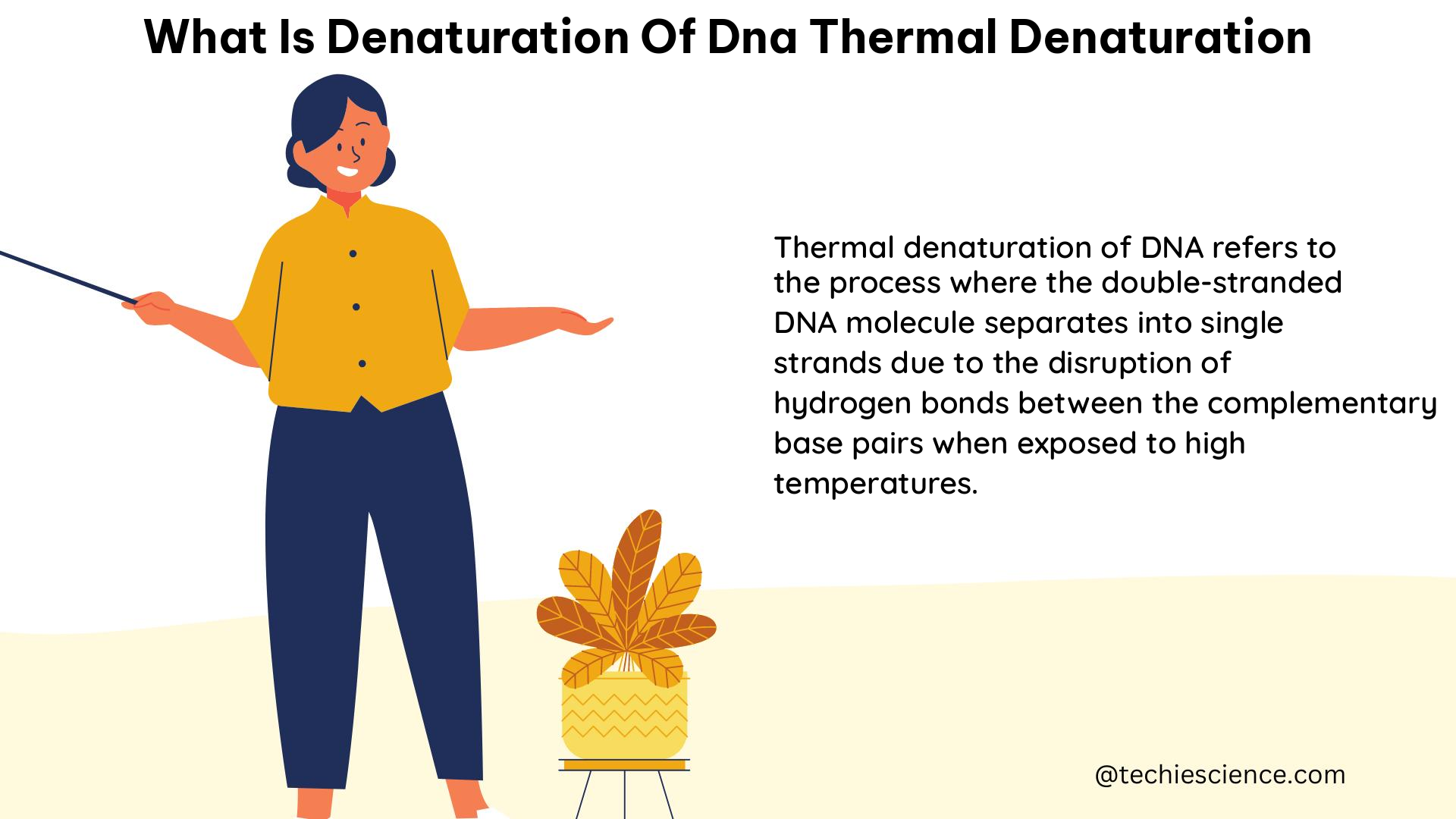Thermal equilibrium is a fundamental concept in thermodynamics, describing a state where two or more objects have the same temperature, and there is no net transfer of heat energy between them. This principle is not only crucial for understanding the behavior of physical systems but also forms the basis for the use of thermometers and temperature measurement. In this comprehensive guide, we will delve into the intricacies of thermal equilibrium, exploring its theoretical foundations, practical applications, and the various factors that influence its establishment.
Understanding Thermal Equilibrium
Thermal equilibrium is a state where the temperatures of two or more objects are equal, and there is no net flow of heat energy between them. This means that the objects have reached a state of balance, where the rate of heat transfer in one direction is exactly balanced by the rate of heat transfer in the opposite direction. This concept is central to the definition of temperature and the use of thermometers in scientific and engineering applications.
Theoretical Foundations
The concept of thermal equilibrium is rooted in the fundamental laws of thermodynamics. Specifically, the Second Law of Thermodynamics states that heat will spontaneously flow from a hotter object to a colder object, but not the other way around. This directional flow of heat continues until the temperatures of the objects are equal, at which point thermal equilibrium is established.
The mathematical expression of thermal equilibrium can be represented by the following equation:
$T_1 = T_2$
Where $T_1$ and $T_2$ are the temperatures of the two objects in contact.
Factors Influencing Thermal Equilibrium
Several factors can influence the establishment of thermal equilibrium, including:
- Heat Transfer Mechanisms: The mode of heat transfer, such as conduction, convection, or radiation, can affect the rate at which thermal equilibrium is reached.
- Thermal Conductivity: The ability of a material to conduct heat, as measured by its thermal conductivity, can impact the speed at which thermal equilibrium is achieved.
- Surface Area: The surface area of the objects in contact can influence the rate of heat transfer and, consequently, the time required to reach thermal equilibrium.
- Insulation: The presence of insulating materials can slow down the heat transfer process, delaying the establishment of thermal equilibrium.
- External Factors: Environmental conditions, such as ambient temperature, pressure, and humidity, can also affect the rate of heat transfer and the time required to reach thermal equilibrium.
Practical Applications of Thermal Equilibrium

Thermal equilibrium has numerous practical applications in various fields, including:
Temperature Measurement
The concept of thermal equilibrium is the foundation for the use of thermometers in temperature measurement. When a thermometer is placed in contact with an object, it reaches thermal equilibrium with the object, and the thermometer’s reading reflects the object’s temperature.
Thermometer Calibration
To ensure accurate temperature measurements, thermometers must be calibrated. This process involves placing the thermometer in thermal equilibrium with a known reference system, such as the freezing and boiling points of pure water, and adjusting the thermometer’s scale accordingly.
Thermometer Types
There are various types of thermometers, each based on the principle of thermal equilibrium, including:
– Mercury-in-glass thermometers
– Bimetallic thermometers
– Resistance temperature detectors (RTDs)
– Thermocouples
– Infrared thermometers
Heat Transfer Analysis
Thermal equilibrium is a crucial concept in the analysis of heat transfer processes, such as conduction, convection, and radiation. Understanding the conditions for thermal equilibrium helps in the design and optimization of heat exchangers, insulation systems, and other thermal management devices.
Thermal Comfort
The concept of thermal equilibrium is also relevant in the field of thermal comfort, where the goal is to maintain a comfortable indoor environment for occupants. Thermal equilibrium between the human body and the surrounding environment is essential for maintaining thermal comfort.
Phase Transitions
Thermal equilibrium plays a vital role in the study of phase transitions, such as the melting and boiling of substances. At the phase transition point, the temperatures of the solid, liquid, and vapor phases are in thermal equilibrium.
Calorimetry
Calorimetry, the measurement of heat transfer in chemical and physical processes, relies on the principle of thermal equilibrium. By bringing a system into thermal equilibrium with a known calorimeter, the amount of heat absorbed or released can be determined.
Thermal Equilibrium Examples and Numerical Problems
To further illustrate the concept of thermal equilibrium, let’s consider some examples and numerical problems:
Example 1: Thermal Equilibrium in a Closed System
Suppose we have two objects, A and B, with initial temperatures of 20°C and 40°C, respectively. The objects are placed in a closed, insulated container and allowed to reach thermal equilibrium. Determine the final temperature of the system.
Given:
– Initial temperature of object A: $T_A = 20°C$
– Initial temperature of object B: $T_B = 40°C$
At thermal equilibrium, the temperatures of the two objects must be equal, so:
$T_A = T_B = T_\text{final}$
To find the final temperature, we can use the principle of conservation of energy, which states that the total energy of the system must be constant. In this case, the total energy of the system is the sum of the internal energies of the two objects.
The change in internal energy of each object is given by:
$\Delta U_A = m_A c_A (T_\text{final} – T_A)$
$\Delta U_B = m_B c_B (T_\text{final} – T_B)$
where $m_A$ and $m_B$ are the masses of the objects, and $c_A$ and $c_B$ are their specific heat capacities.
Since the total energy of the system is constant, the sum of the changes in internal energy must be zero:
$\Delta U_A + \Delta U_B = 0$
Substituting the expressions for the changes in internal energy and rearranging, we get:
$T_\text{final} = \frac{m_A c_A T_A + m_B c_B T_B}{m_A c_A + m_B c_B}$
This equation gives the final temperature of the system at thermal equilibrium.
Numerical Problem 1
A 2 kg copper block at 80°C is placed in contact with a 3 kg aluminum block at 20°C. Assume the specific heat capacities of copper and aluminum are 0.385 J/g·°C and 0.900 J/g·°C, respectively. Determine the final temperature of the system when thermal equilibrium is reached.
Given:
– Mass of copper block: $m_\text{Cu} = 2 \text{ kg}$
– Initial temperature of copper block: $T_\text{Cu} = 80°C$
– Mass of aluminum block: $m_\text{Al} = 3 \text{ kg}$
– Initial temperature of aluminum block: $T_\text{Al} = 20°C$
– Specific heat capacity of copper: $c_\text{Cu} = 0.385 \text{ J/g·°C}$
– Specific heat capacity of aluminum: $c_\text{Al} = 0.900 \text{ J/g·°C}$
To find the final temperature at thermal equilibrium, we can use the equation derived in the previous example:
$T_\text{final} = \frac{m_\text{Cu} c_\text{Cu} T_\text{Cu} + m_\text{Al} c_\text{Al} T_\text{Al}}{m_\text{Cu} c_\text{Cu} + m_\text{Al} c_\text{Al}}$
Substituting the given values, we get:
$T_\text{final} = \frac{(2 \text{ kg})(0.385 \text{ J/g·°C})(80°C) + (3 \text{ kg})(0.900 \text{ J/g·°C})(20°C)}{(2 \text{ kg})(0.385 \text{ J/g·°C}) + (3 \text{ kg})(0.900 \text{ J/g·°C})}$
Simplifying the calculation, the final temperature at thermal equilibrium is:
$T_\text{final} = 40°C$
This means that when the copper and aluminum blocks are placed in contact, they will eventually reach a final temperature of 40°C at thermal equilibrium.
Example 2: Thermal Equilibrium and Thermometer Calibration
To calibrate a mercury-in-glass thermometer, the thermometer is placed in thermal equilibrium with the freezing point of pure water at 0°C and the boiling point of pure water at 100°C. The length of the mercury column at these two points is marked on the thermometer’s scale.
Once the thermometer is calibrated, it can be used to measure the temperature of any other system by placing it in thermal equilibrium with that system. The temperature of the system can then be determined by the position of the mercury column on the calibrated scale.
This example illustrates how the concept of thermal equilibrium is fundamental to the use of thermometers in temperature measurement. By establishing thermal equilibrium between the thermometer and the known reference points (freezing and boiling points of water), the thermometer can be accurately calibrated and used to measure the temperature of other systems.
Numerical Problem 2
A mercury-in-glass thermometer is calibrated using the freezing and boiling points of pure water. The length of the mercury column at the freezing point is 2.5 cm, and the length at the boiling point is 15.0 cm. The thermometer is then placed in thermal equilibrium with an unknown liquid, and the length of the mercury column is measured to be 8.0 cm. Determine the temperature of the unknown liquid.
Given:
– Length of mercury column at freezing point: 2.5 cm
– Length of mercury column at boiling point: 15.0 cm
– Length of mercury column for unknown liquid: 8.0 cm
To find the temperature of the unknown liquid, we can use the linear relationship between the length of the mercury column and the temperature, which is established during the calibration process.
Let’s define the following variables:
– $T_\text{freezing}$ = 0°C (freezing point of water)
– $T_\text{boiling}$ = 100°C (boiling point of water)
– $T_\text{unknown}$ = unknown temperature of the liquid
The linear relationship between the length of the mercury column and the temperature can be expressed as:
$\frac{L_\text{unknown} – L_\text{freezing}}{L_\text{boiling} – L_\text{freezing}} = \frac{T_\text{unknown} – T_\text{freezing}}{T_\text{boiling} – T_\text{freezing}}$
Substituting the given values, we get:
$\frac{8.0 \text{ cm} – 2.5 \text{ cm}}{15.0 \text{ cm} – 2.5 \text{ cm}} = \frac{T_\text{unknown} – 0°C}{100°C – 0°C}$
Solving for $T_\text{unknown}$, we find:
$T_\text{unknown} = \frac{8.0 \text{ cm} – 2.5 \text{ cm}}{15.0 \text{ cm} – 2.5 \text{ cm}} \times 100°C = 50°C$
Therefore, the temperature of the unknown liquid is 50°C.
Conclusion
Thermal equilibrium is a fundamental concept in thermodynamics that describes the state where two or more objects have the same temperature, and there is no net transfer of heat energy between them. This principle is not only crucial for understanding the behavior of physical systems but also forms the basis for the use of thermometers and temperature measurement.
In this comprehensive guide, we have explored the theoretical foundations of thermal equilibrium, the factors that influence its establishment, and the various practical applications of this concept, including temperature measurement, heat transfer analysis, thermal comfort, phase transitions, and calorimetry. We have also provided examples and numerical problems to illustrate the application of thermal equilibrium in real-world scenarios.
By understanding the intricacies of thermal equilibrium, students and professionals in the field of physics can gain a deeper appreciation for the principles that govern the behavior of thermal systems and the practical implications of this fundamental concept.
References
- Thermal equilibrium – xaktly.com
- Thermodynamic Equilibrium – NASA
- Thermal Equilibrium Definition, Equation & Examples – Lesson

